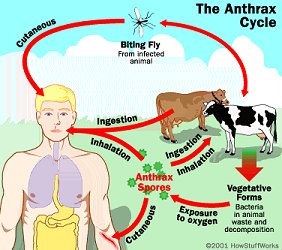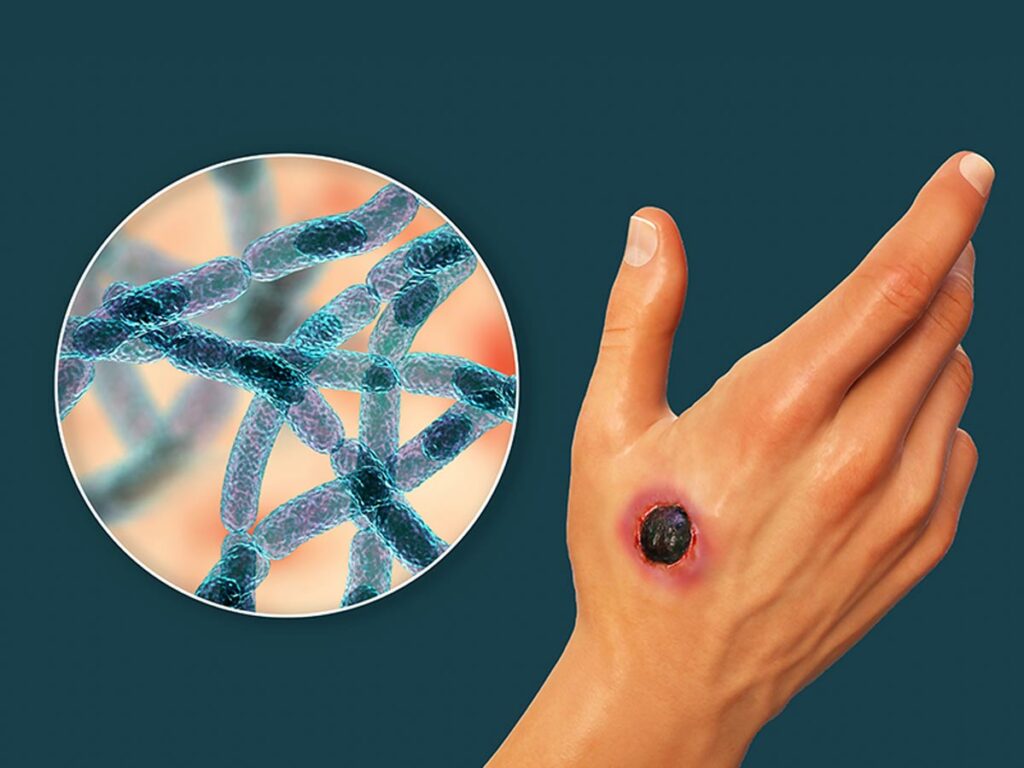On Monday, Nigerians were warned against the consumption of hides (ponmo) as well as smoked and bush meat.
The warning came after the outbreak of a deadly disease called Anthrax in some neighbouring West African countries.
A statement by the Federal Ministry of Agriculture and Rural Development (FMARD) on Monday revealed that the disease had claimed some lives in Burkina Faso, Togo and Ghana.
FMARD then stressed the need to intensify animal vaccinations in Sokoto, Kebbi, Niger, Kwara, Oyo, Ogun and Lagos states because of their proximity to West Africa.
READ ALSO: EXPLAINER: Medicated Soaps and Antiseptics Can Harm Your Skin. Here’s How
WHAT IS ANTHRAX?
Anthrax is both a zoonotic and bacterial disease. Being a zoonotic disease, it is transmitted from animals to humans. It is also a bacterial disease because it can be treated with antibiotics and supportive therapy.
According to the Africa Centres for Disease Control and Prevention (Africa CDC), it is a serious infectious disease caused by gram-positive, rod-shaped bacteria known as Bacillus anthracis. The disease can be found in soil, and domestic and wild animals.
The Africa CDC notes four types of anthrax: cutaneous, inhalation anthrax, gastrointestinal and injection. The spores of the bacteria can survive in the environment for decades.
Cattle, sheep, goats, antelopes and deers can be infected with anthrax when they ingest spores in contaminated soil, plants or water.
Also, humans contract it when they come in contact with infected animals or contaminated animal products, such as hides and skin, meat or milk.
READ ALSO: HSV, the Incurable Sexually Transmitted Disease Half of the World Has Contracted

SIGNS OF INFECTION
Anthrax and flu have similar symptoms, which include cough, fever and muscle aches.
FMARD notes that the disease can lead to pneumonia, severe lung problems, difficulty in breathing, shock and death if it is not diagnosed and treated early.
According to Africa CDC, the symptoms depend on the type of infection and can take anywhere from one day to more than two months to appear.
“Cutaneous Anthrax includes a group of small blisters or bumps that may itch, swelling can occur around the sore, a painless skin sore (ulcer) with a black centre that appears after the small blisters or bumps and most often the sore will be on the face, neck, arms or hands,” it said.
“Inhalation Anthrax involves fever and chills, chest discomfort, shortness of breath, confusion or dizziness and cough, nausea, vomiting, or stomach pains, headache, sweats (often drenching), extreme tiredness and body aches.”

“Gastrointestinal Anthrax symptoms involve fever and chills, swelling of neck or neck glands, sore throat, painful swallowing, hoarseness, nausea and vomiting, especially bloody vomiting, diarrhoea or bloody diarrhoea, headache, flushing and red eyes, stomach pain, fainting and swelling of the abdomen.
“Injection Anthrax includes fever and chills, a group of small blisters or bumps that may itch, appearing where the drug was injected, a painless skin sore with a black centre that appears after the blisters or bumps, swelling around the sore and abscesses deep under the skin or in the muscle where the drug was injected.”
PREVENTION AND TREATMENT
According to FMARD, vaccination is the easiest means of prevention and control of Anthrax in animals.
But the ministry revealed that infected animals cannot be vaccinated. Only the animals at risk can receive vaccinations.
“Annual vaccinations with anthrax spore vaccines are available at National Veterinary Research Institute Vom, Plateau State,” stated FMARD.
The government agency also urged Nigerians to bury infected dead animals deep into the soil along with equipment used in the burial. This should be done after applying chemicals that will kill the anthrax spores.
With respect to treatment, antibiotics and antitoxins can be used to treat different types of anthrax infections. Two antibiotics commonly used for anthrax prevention are ciprofloxacin and doxycycline.
Antibiotics and antitoxins can also stop the disease from developing in people who have been exposed but do not have symptoms yet.
Meanwhile, it is important to note that anthrax is not a contagious disease, hence you cannot contract it by being in close contact with an infected person.
Subscribe
Be the first to receive special investigative reports and features in your inbox.















